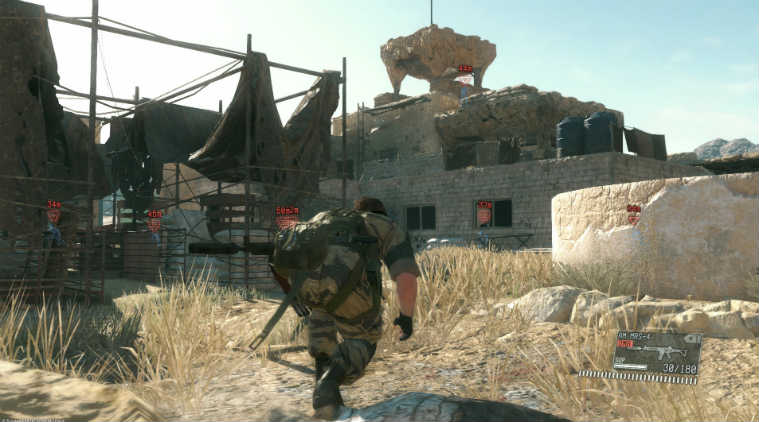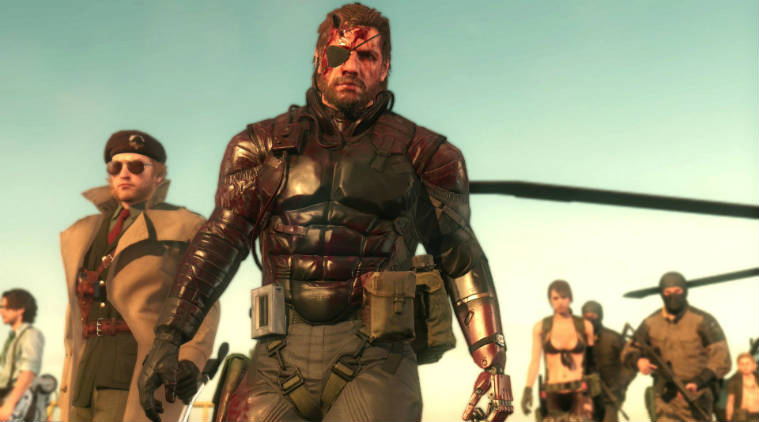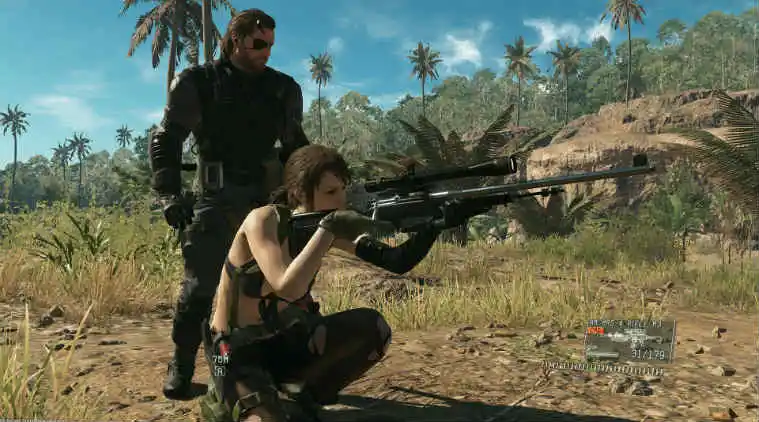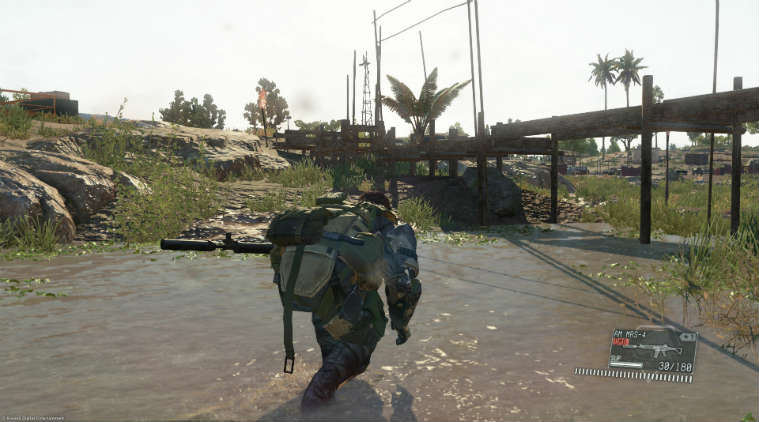Metal Gear Solid V: The Phantom Pain review – Create your own battles
We take a look at 'Metal Gear Solid: The Phantom Pain (MGSV)' on the basis of story, gameplay and graphics
 You can’t help but spot Kojima’s signature bread crumbs throughout MGSV
You can’t help but spot Kojima’s signature bread crumbs throughout MGSV
‘Metal Gear Solid V: The Phantom Pain’ is Hideo Kojima’s magnum opus. Even though Konami may have deliberately removed Kojima’s name from all products and promotions after he walked away, you can’t help but spot his signature bread crumbs throughout MGSV.
Let us get one thing out of the way, The Phantom Pain is a war designed by Kojima himself. All you can do is plan out the way you approach each battle and although you may feel like you have a complete freedom over how you win each skirmish, you can’t step beyond the line drawn by Kojima. More on that later.
We take a look at ‘Metal Gear Solid: The Phantom Pain (MGSV)’ on the basis of story, gameplay and graphics.
Story: Simple and suitable
 MGSV is a tried-and-tested revenge story, which fits perfectly with the open-world backdrop.
MGSV is a tried-and-tested revenge story, which fits perfectly with the open-world backdrop.
Hideo Kojima’s stories are expected to play out like a Christopher Nolan movie. With plots, twists, sudden character changes and lots of explosions, Kojima is known to spin some of the best tales ever told in video games.
The story of MGSV, however, is not that convoluted and it works in the game’s favour. It often happens that modern gamers, with incredibly short attention space, get confused with stories that are too hard to keep a track of. MGSV is a tried-and-tested revenge story, which fits perfectly with the open-world backdrop.
 The protagonist has to build a mercenary group, bullet by bullet with whatever he can collect throughout his missions
The protagonist has to build a mercenary group, bullet by bullet with whatever he can collect throughout his missions
We step into the shoes of Big Boss (father of the legendary MGS protagonist, Solid Snake) who is given the task of locating and taking out a mercenary group in a war-torn Afghanistan. Big Boss heads a mercenary group, which he has to build and develop, bullet by bullet with whatever he can collect throughout his missions. For example, if you find an unmanned tank in the battlefield, you can easily tag it and send it to your Mother Base by using Fulton balloons. You can send anything and everything, ranging from laptops to animals to ammo boxes to trucks, back to your Mother Base.
The Mother Base is basically like a glorified loot bag. Whatever you pick up from your missions becomes available at the mother base and each addition has its implications. So, an enemy soldier who knows the local language may be trained to be your translator in the upcoming missions. More guns mean more firepower and an edge over the enemies. More robotic guns and droids mean more tactical advantage during your mission. How you develop your base depends on you and the game will progress accordingly.
Gameplay: DIY battle kit
Remember playing with GI Joes? You created your own world with those plastic soldiers and playing MGSV almost feels the same.
As Big Boss, you are given an objective and a location. How you achieve your objective is entirely up to you. MGSV offers a lot more that the usual two-pronged approach. There is more to MGSV’s stealth than what you may expect.
 Metal Gear Solid V: The Phantom Pain embraces the idea of DIY game battle kit
Metal Gear Solid V: The Phantom Pain embraces the idea of DIY game battle kit
For example if there is a mission where you are required to stop a convoy of tanks, you can either awaken your inner Rambo and launch a full-frontal assault with RPGs, C4 explosives and lots of guns. Or, you can simply place a Big Boss-lookalike decoy on the road. When the drivers get down to inspect, you can take them silently with your knife. The choice is up to you.
However, we told you earlier that it is Hideo Kojima’s war and you can clearly see his imprints in the game with some things that seem out-of-place or even absurd. For instance when you tag an enemy with a fulton balloon, he is launched into the sky, screaming at the top of his lung, while other guards standing a few feet away can’t hear anything. It is moments like these that ruined serious moments of stealth for us.
For each mission, Big Boss can choose an aid who will help him throughout his campaigns. That can be a faithful yet ferocious dog, a metal gear bot, or an expert female sniper named Quiet. While Quiet is an expert shooter and probably the most helpful aid in tougher missions, we wondered why she would choose to dress in such a skimpy outfit. It doesn’t go with the otherwise serious mood of the game and, to put it simply, it looks odd. But, as we said, its Kojima’s world and if that’s the way he wishes to introduce the oomph factor in the game, so be it.
The open-world gameplay works well in favour of MGSV. There are lots to do on the huge and diverse map. However, each main mission begins with Big Boss dropping down from the chopper and ends with him making a run for his chopper amidst a raging storm of bullets. This hampers the open-world flow of the game and it’s not as seamless as ‘Assassins’ Creed: Unity’.
Graphics: Sand on the keyboard
 When the protagonist crawls through the sand dunes, you can see the trails made through the grains of sand
When the protagonist crawls through the sand dunes, you can see the trails made through the grains of sand
The deserts of Afghanistan look stunning in MGSV. When Big Boss crawls through the sand dunes, you can see the trails made through the grains of sand, thanks to astounding particle systems employed in the game.
Nowadays, every other game boasts of real-time climate change. However, none of them offers anything better than a simple night-day cycle. MGSV delivers what it promises. When you are on a mission, more often than not, a devious desert storm would sneak up on you and change the game plan in a second.
Sometimes, it may act in your favour, especially when you are trying to make an escape from a platoon of soldiers hunting you down. Sometimes, though, it acts as a hindrance, especially when you try to scout and take down enemy outposts with your sniper rifle. The dynamic climate change feels real, and almost as good as Assassins’ Creed: Black Flag, if not better.
At 1080p and 60 FPS (if your GPU can support it) MGSV looks more appealing than any other game out there. A lot of care has gone into designing MGSV and it reflects.
Verdict
The Phantom Pain is the best in the Metal Gear Solid series and so far, the best open-world stealth game on next-gen consoles. It offers over 30-hours of stealthy, tactical fun. There are a few shortocmings that makes the game fall short of becoming the greatest of all time. However, its still the best game after Witcher III this year. Pick up your copy and let us know your best moments in the MGSV.







